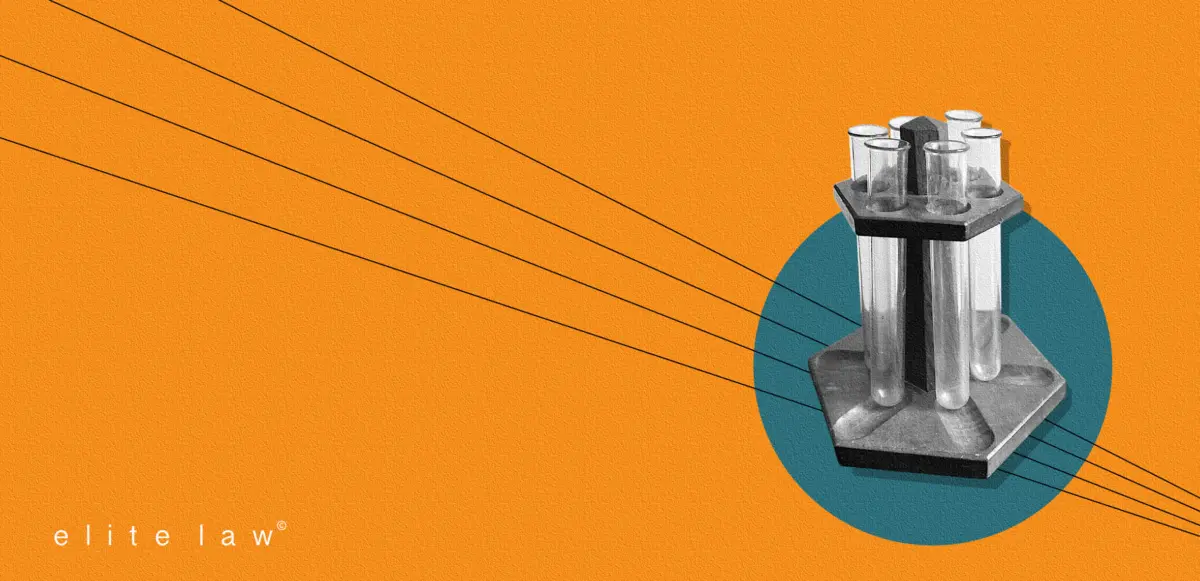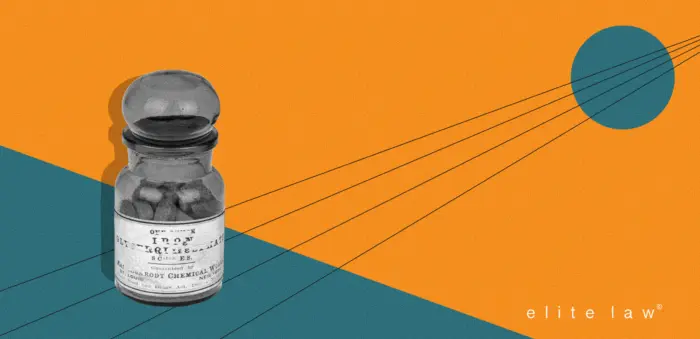Doping in sport: an old unwelcome participant
Doping has always been an unwelcome companion of sport. Since ancient times, athletes taking part in the first Olympic Games attempted to improve their performance with experimental diets that included figs, mushrooms, or plant extracts.
In the following centuries, man’s giant strides in pharmacology went hand in hand with the development of increasingly sophisticated forms of doping. Especially from the 19th century onwards, the phenomenon spread like wildfire and it became quite common for athletes to take ‘cocktails of drugs’ prescribed by unscrupulous doctors, underestimating the – often devastating – side effects that accompanied the improvement in performance.
In this post, we want to give an overview of the regulatory and institutional tools that have been created, since the late 1990s, to tackle this phenomenon worldwide. In particular, we will deal with:
– The WADA Code
– Anti-doping rule violations and the proof of doping
– The framework of sanctions in case of anti-doping rule violations
The WADA Code
As a starting point it is useful to recall that the World Anti-Doping Agency (“WADA”) is an international independent agency whose primary role is to develop, harmonize and coordinate anti-doping rules and policies across all sports and countries.
WADA, as global regulatory body, has introduced the World Anti-Doping Code (the “Code”), which is the core document that harmonizes anti-doping policies, rules and regulations within sport organizations and among public authorities around the world.
The WADA Code works in conjunction with eight International Standards, which are mandatory documents setting minimum requirements in various areas of anti-doping activities to ensure consistency among anti-doping organizations, and is supported by 12 non-mandatory Guidelines.
WADA also produces a list of substances and methods that are banned in sport (the “Prohibited List”) as such substances and methods satisfy any two of the following three criteria: (a) they have the potential to enhance or enhance sport performance; (b) they represent an actual or potential health risk to Athletes; (c) they violate the spirit of sport (as defined in the Code).
Substances or methods which mask the effect or detection of prohibited substances are also prohibited.
The Prohibited List is reviewed and updated annually after consultation with scientific and medical anti-doping experts.
The WADA Code covers a wide range of topics (such as definition of doping in sport, proof of doping, the prohibited list, testing and investigations, analysis of samples, results management, sanctions on individuals and consequences to teams, rights of the parties involved in anti-doping proceedings, implementation of decisions and so on) but for the purpose of the present article it will be sufficient to recall only some specific principles and provisions.
Anti-doping rule violations and the proof of doping
According to Article 1 of the WADA Code, doping is defined as the occurrence of one or more of the anti-doping rule violations (“ADRV”) set forth in Article 2.1 through Article 2.11.
Article 2 of the Code specifies the circumstances and conducts which constitute ADRVs .
It also provides for the important basic principle that Athletes are responsible for knowing what constitutes an ADRV and the substances and methods included on the Prohibited List. It follows that any lack of knowledge of the Code or the Prohibited List cannot exonerate Athletes from their responsibilities.
One of the various ADRV is the presence of a Prohibited Substance or its Metabolites or Markers in an Athlete’s sample (Article 2.1 of the Code).
The key principle at the basis of this ADRV is that Athletes are always responsible for what is found in their bodies irrespective of their intent, fault or negligence, as they have a personal duty to ensure that no Prohibited Substance enters their bodies (Article 2.1.1 and Article 2.2.1 of the Code).
This is to say that the occurrence of such ADRV is independent from any subjective consideration on the behaviour of the Athlete.
In addition, it is worth reminding that the mere presence of any reported quantity of a Prohibited Substance or its Metabolites or Markers in an Athlete’s Sample shall constitute an ADRV except for substances for which a Decision Limit is specifically identified in the Prohibited List or a Technical Document (Article 2.1.3 of the Code).
With regards to the burdens and standard of proof of doping, while Anti-Doping Organizations have the burden of establishing that an ADRV has occurred to the comfortable satisfaction of the hearing panel (which is greater than a mere probability but less than proof beyond a reasonable doubt), the Athlete may rebut a presumption or establish specified facts or circumstances by a balance of probability.
The framework of sanctions in case of anti-doping rule violations
The occurrence of an ADRV may result into the imposition of sanctions on Athletes who are found to have committed such violation.
In order to establish the appropriate sanction, a distinction between Specified and non-Specified Substances must be made.
According to the comment on Article 4.2.2 of the Code, WADA considers that Specified Substances are simply substances which are more likely to have been consumed or used by an Athlete for a purpose other than the enhancement of sport performance.
However, such distinction is far from being purely theoretical as the nature of the Prohibited Substance, for instance, has also direct repercussions on the length of the period of ineligibility to be imposed on the Athlete to be found to have committed an ADRV.
Indeed, under Article 10.2.1 of the Code: The period of Ineligibility, subject to Article 10.2.4, shall be four (4) years where:
- Under article 10.2.1.1 The anti-doping rule violation does not involve a Specified Substance or a Specified Method, unless the Athlete or other Person can establish that the anti-doping rule violation was not intentional.
- Under article 10.2.1.2 The anti-doping rule violation involves a Specified Substance or a Specified Method and the Anti-Doping Organization can establish that the anti-doping rule violation was intentional.
In turn, the period of ineligibility shall be two (2) years if, in case Article 10.2.1.1 of the Code applies, the Athlete demonstrates that the ADVR was not intentional, or if, in case Article 10.2.1.2 of the Code applies, the Anti-Doping Organization cannot demonstrate that the anti-doping rule violation was intentional.
As established by Article 10.2.3 of the WADA Code, the concept of “intentionality”is meant “to identify those Athletes or other Persons who engage in conduct which they knew constituted an anti-doping rule violation or knew that there was a significant risk that the conduct might constitute or result in an anti-doping rule violation and manifestly disregarded that risk”.
The provision does not expressly state that, in order to prove the unintentionality of the violation, the Athlete must establish how the Prohibited Substance entered his/her system.
Notwithstanding the occurrence of an ADRV, the period of ineligibility may be eliminated or reduced in case the Athlete establishes in an individual case that he or she bears, respectively, No Fault or Negligence (Article 10.5 of the Code) or No Significant Fault or Negligence (Article 10.6 of the Code):
- A No Fault or Negligence situation occurs when the Athlete establishes that he or she did not know or suspect, and could not reasonably have known or suspected even with the exercise of utmost caution, that he or she had used or been administered the Prohibited Substance or Prohibited Method or otherwise violated an anti-doping rule.
- A No Significant Fault or Negligence situation occurs where the Athlete’s Fault or Negligence, when viewed in the totality of the circumstances and taking into account the criteria for No Fault or Negligence, was not significant in relationship to the ADRV.
In such case the sanction can be set within a range between a reprimand with no period of ineligibility and 2 years of ineligibility.
Unlike the provision of Article 10.2.3 above, under both Article 10.5 and 10.6 of the Code, for any violation of Article 2.1 it is specifically provided that the Athlete must establish how the Prohibited Substance entered the Athlete’s system in order to benefit from the elimination or reduction of the sanctions.
Conclusion
In conclusion, the fight against doping in sport is a global issue, and since the late 1990s, the World Anti-Doping Agency (WADA) has been at the forefront of developing and implementing policies and regulations to combat this phenomenon.
The WADA Code and the Prohibited List set out the legal framework for doping control, while the ADRV provisions and the sanctions system provide for the necessary deterrence.
Athletes have a personal duty to ensure that no prohibited substance enters their bodies, and ignorance of the Code or the Prohibited List cannot excuse a violation.
However, not always athletes, even if found with a Prohibited Substance in their body, are cheaters or can/must be condemned.
As expert lawyers in sports law, Elite Law is committed to helping our clients comply with the anti-doping rules and regulations and defend their rights in case of alleged anti-doping rule violations.
Our firm has a long experience in the field, we successfully advised athletes and teams coming from different disciplines dealing with this kind of disputes.
Contact us now to learn more about our services, we can be the law firm you are looking for.


